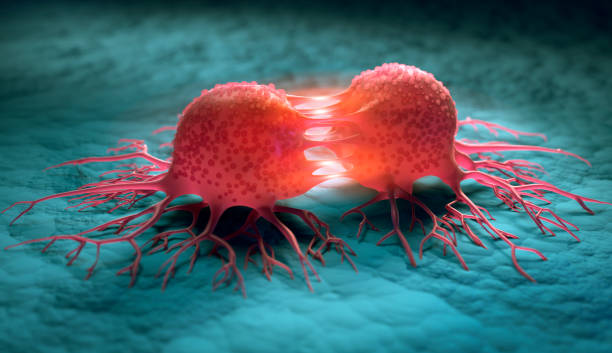Breast Cancer
Types, Stages and Grades

Types of breast cancer
Breast cancer can occur in one or both breasts. There are different types of breast cancer, each with its own set of characteristics, symptoms, prognosis, and treatment options.
The most common types of breast cancer are invasive ductal carcinoma (IDC) and invasive lobular carcinoma (ILC). Other less common types of breast cancer include inflammatory breast cancer, Paget’s disease of the nipple, breast angiosarcomas, medullary breast cancer, and mucinous breast cancer.
DCIS is a non-invasive type of breast cancer that begins in the cells of milk ducts, but these cells have not spread outside of the ducts. DCIS can be detected on a screening mammogram before it can be felt.
IDC is the most common type of breast cancer. IDC starts in the breast ducts but then spreads into the surrounding tissues. It can metastasize to the lymph nodes and other parts of the body.
ILC starts in the milk-producing glands (lobules), but then spreads into the surrounding tissues. It is the second most common form of breast cancer after IDC.
IBC is a rare and aggressive type of breast cancer. IBC is often caused by IDCs, starting in the milk ducts but then spreading into the surrounding tissues. IBC often looks like an infection, such as a breast rash or cellulitis. It makes the breast red, swollen, and warm. The breast skin may feel hard and thick.
Paget’s disease of the nipple is a rare type of breast cancer. It starts in the breast ducts and then spreads to the nipple and areola. The nipple may be itchy, scaly, or crusty. It can also present with bloody discharge from the nipple. Sometimes, a lump is felt behind the nipple and areolar.
: Breast angiosarcomas are rare tumours that arise from the cells lining the blood or lymphatic vessels. There are two types of breast angiosarcomas, primary and secondary. Primary angiosarcomas occur in people who have never been diagnosed with breast cancer and who are generally younger, while secondary angiosarcomas arise in people who have previously received treatment for breast cancer. Angiosarcomas also grow and spread rapidly, so they can be more difficult to treat. Due to its rarity, angiosarcomas can be difficult to diagnose as well.
Medullary breast carcinoma is rare subtype of IDC. In this kind of cancer, plasma and white blood cells surround the tumour, preventing the tumour from growing and spreading to the rest of the body. It tends to be bigger than in other types of breast cancer and occurs more often in younger women and in women with a mutated BRCA 1 gene.
It is a type of breast cancer that is slower growing than other types. It has this name because the cancer is made up of a large amount of mucin. This form of breast cancer may be a pure type mucinous cancer, which is made up nearly exclusively of tumour tissue with extracellular mucin production (mucin outside the cells). Or a mixed type mucinous cancer, where the tumour may also be made up of ductal epithelial cells which do not produce mucin. Mucinous breast cancer occurs more often in older women and is less likely to spread to the lymph nodes.
Men can get breast cancer, but it is rare. Male breast cancer is often more aggressive, has a worse prognosis, is often detected at a more advanced stage and is more likely to have spread to other parts of the body by the time it is diagnosed. This is due to men being less likely to have breast cancer screening tests, such as mammograms.
Breast cancer stages and grades
For most people diagnosed with breast cancer, the first step is finding out if cancer has spread outside the breast. This process is called staging.
Breast cancer stages
The stage of cancer describes how much cancer is in the body and where it is located. Staging tests help doctors determine the stage of breast cancer which is important because it helps guide treatment decisions
Breast cancer staging is a way of categorizing breast cancer based on the size of the tumour and whether or not it has spread to other parts of the body. The most common staging systems used for breast cancer are the TNM system and the number system.

TNM staging system
The TNM system stands for tumour, node, and metastasis. It is a way of categorizing breast cancer based on the size of the tumour and whether or not it has spread to other parts of the body.

The tumour stage refers to the size of the primary tumour and whether it has spread to nearby tissues. The tumour is graded based on its size and how far it has invaded nearby tissues.
The node stage refers to whether cancer has spread to the lymph nodes. The node is graded based on whether or not cancer has spread to the lymph nodes.
The metastasis stage refers to whether cancer has spread to other organs in the body. The metastasis is graded based on whether or not cancer has spread to other organs in the body.
The TNM system is used to stage breast cancer and guide treatment decisions.
In stage 0, breast cancer is non-invasive and confined to the breast ducts or lobules, and has not started to spread into the surrounding breast tissue. Ductal carcinoma in situ falls into this category.
In stage I, breast cancer is small and confined to the breast (has not spread outside of the breast). Stage I is further divided into sub-stages: IA, IB, and IC.
Stage IA: In stage IA, the cancer is less than 2 cm) in size and has not spread outside of the breast.
Stage IB: In stage IB, the cancer is either:
- Less than 2 cm in size and has spread to the lymph nodes
- More than 2 cm in size, but has not spread to the lymph nodes
Stage IC: In stage IC, the cancer is either:
- Less than 2 cm in size and has spread to the skin or the chest wall
- More than 2 cm in size and has spread to the skin or the chest wall
In stage II, breast cancer is larger than it was in stage I and has spread to the lymph nodes under the arm, but not to other parts of the body. Stage II is further divided into sub-stages: IIA, IIB, and IIC.
Stage IIA: In stage IIA, the cancer is either:
- 2 cm – 5 cm in size and has spread to the lymph nodes
- More than 5 cm in size, but has not spread to the lymph nodes
Stage IIB: In stage IIB, the cancer is either:
- 2 cm – 5 cm in size and has spread to the skin, the chest wall, or the lymph nodes
- More than 5 cm in size and has spread to the skin, the chest wall, or the lymph nodes
Stage IIC: In stage IIC, the cancer is more than 5 cm in size and has spread to the skin, the chest wall, or the lymph nodes.
In stage III, breast cancer is large and has spread to other parts of the body and/or organs. Stage III is further divided into sub-stages: IIIA, IIIB, and IIIC.
Stage IIIA: In stage IIIA, the cancer is either:
- Small and has spread to the lymph nodes under the arm or above the collarbone
- Large and has spread to the lymph nodes under the arm or above the collarbone
Stage IIIB: In stage IIIB, cancer has spread to the chest wall or the skin of the breast. The cancer may also have spread to the lymph nodes under the arm or above the collarbone.
Stage IIIC: In stage IIIC, cancer has spread to nearby tissues and/or organs. The cancer may also have spread to the lymph nodes under the arm or above the collarbone.
In stage IV, cancer has spread to distant parts of the body, such as the liver, lungs, brain, or bones. Stage IV is further divided into sub-stages: IVA and IVB.
Stage IVA: In stage IVA, cancer has spread to distant parts of the body, such as the liver, bone, or brain.
Stage IVB: In stage IVB, cancer has spread to distant parts of the body and has also grown into nearby tissues and/or organs.
Number staging system
The number system is another staging system which is a simpler way of staging breast cancer. It uses numbers from 0 to 4 to describe how far cancer has progressed. There are four main stages: stage 0, stage I, stage II, and stage III.
Grading breast cancer
Breast cancer cells look different from healthy breast cells under a microscope. Doctors use this difference to grade breast cancer. Breast cancer grades are categorized as either low grade or high grade. Grading breast cancer is important because it helps guide treatment decisions.
The most common grading system used for breast cancer is the Nottingham Histologic Score (NHS). The NHS uses a scale of 1-3 to grade breast cancer tumours. The grade describes how a cancer cell looks under the microscope and whether they are similar or very different to normal cells.
There are three factors taken into consideration:
1. Glandular/tubular formation
refers to how much of the tumour tissue has normal breast (milk) ducts or how well the tumour cells are trying to recreate normal glands
2. Nuclear features
the evaluation of the size and shape of the nucleus in tumour cells
3. Mitotic activity
how much the tumour cells are dividing, or proliferating, which is a measure of how fast the tumour cells are growing
Each of these features is scored from 1 to 3, and then the scores are added to give a final total score ranging from 3 to 9. The final total score is used to determine the grade in the following way:
The breast cancer cells look similar to normal breast cells and are slow-growing. These are well-differentiated cancers. They are arranged in small tubules for ductal cancer and cords for lobular cancer. These cancers tend to grow and spread slowly and have a good outlook (prognosis).
The breast cancer cells look less like normal breast cells and are growing faster than grade 1 tumours. They are moderately differentiated. This means the features and outlook (prognosis) are somewhere between well and poorly differentiated.
The breast cancer cells look very different to normal breast cells and are growing quickly. These are poorly differentiated cancers that have abnormal features. They tend to grow and spread more quickly and have a worse outlook (prognosis).
Grading breast cancer is important because it helps guide treatment decisions. Low-grade breast cancer tends to grow more slowly, less aggressively, and more likely to respond to treatment. Higher-grade breast cancers typically grow and spread quicker and require more aggressive treatment, or may require treatment to reduce the risk of recurrence.
Conclusion
Breast cancer is a serious disease that can be life-threatening. However, with early detection and treatment, the majority of people diagnosed with breast cancer will go on to live long and healthy lives.
It is important to be familiar with the different types, stages, and grades of breast cancer so that you can make informed decisions about your treatment. If you have any questions about breast cancer, please speak with your doctor.
